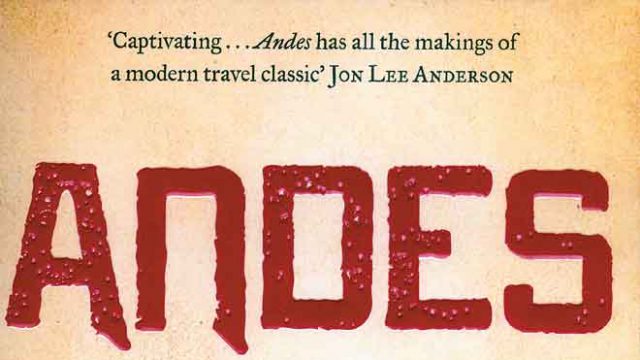There was a point on the first page of Andes that made me freeze in horror at what the remaining 500 pages might contain. It wasn’t landslide, a volcanic eruption, climbers succumbing to hypoxia, nor popular culture’s best-known Andean tragedy — the Uruguayan rugby team who survived a plane crash and wished they hadn’t. Jacobs says that his interest in the range had been stimulated by stories of his grandfather who had worked there as a railway engineer before World War II. Hell, I thought, it’s going to be a ‘Journey into the Past’, the ‘Journey into Oneself’. I’d prefer a long walk off a short pier to one of those. Thankfully, I was dead wrong. Jacobs’ journey is informed not by soupy family anecdotes, but the writings of authors and explorers who’ve been there before him. Accounts of Alexander Humboldt’s eighteenth-century expeditions and the travels of Christopher Isherwood are oft-quoted.
Jacobs’ journey begins in his interest in the geology of mountains, concluding that they are “ephemeral things that are born and die just like human beings”. His plan is to “travel the whole length of the Andes and, in doing so, observe the mountains as I would the unfolding story of a human life”. What emerges is a pleasantly loosely-knit, undefined itinerary that allows Jacobs to meander conversationally between geology and vivid images largely of “faraway terraced mountains crisply lit up by snatches of early-morning sunlight” with a bit of “swaying palms set against thickets of cassia, capers and arborescent mimosa’’.
The main focus is its social and political context, provided with lengthy (but never tiresome) historical backgrounds. Indeed, there is more history than anything else. Simon Bolivar’s reputation as an undisputed and altruistic hero in the struggle for independence is thoroughly parsed, Chavez’s rise to power analysed and Jacobs also gives us insights on terrorism in Colombia. That said, he does thankfully make the odd sweeping statement. Writers who cautiously hedge their bets and refuse to be taken in by the romance of travel are a modern plague. The chapter ‘Andean Baroque’ takes him to Quito, a pre-colonial Incan city, the ‘true’ architectural style of which is baroque: “I stared dazed at all the acanthus, tendrils, angels, oversize volutes, wings, spirals, Corinthian capitals, twisted columns…And I ended up seeing all this as a crazed, hysterical, vainglorious response to a seismic world capable of destroying it all in seconds.’’ While Jacobs satisfactorily lays out the Andes’ past, he also hints at its future, one of careless and devastating environmental degradation, of continuing cultural imperialism and of a brand of political opportunism all its own.
This is not an adventure story. It’s far grander and less pompous than the account of one man facing his mortality. The Andes themselves and the civilisation that co-exists with them are the adventure. It’s such a relaxed account of what one might reasonably expect to be an arduous journey that there are moments when it feels that Jacobs is beaming this to us from a desk at the British Library.




